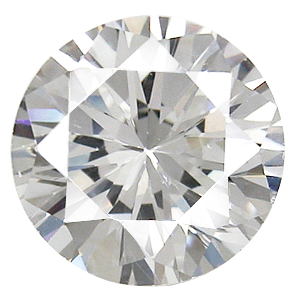
How are Lab Diamonds Created and What Sets Them Apart from Natural Diamonds?
The emergence of lab diamond has revolutionized the diamond industry, offering an ethical and sustainable alternative to naturally mined diamonds. In this exploration, we will delve into the intricate process of creating lab diamonds, highlighting the key distinctions between lab diamonds, natural diamonds, and cubic zirconia.
1. The Process of Lab Diamond Creation:
Synthesis Techniques: Lab diamonds are typically created using two main methods: High Pressure High Temperature (HPHT) and Chemical Vapor Deposition (CVD). The HPHT method involves replicating the high-pressure, high-temperature conditions under which natural diamonds form, while CVD utilizes a gas mixture to deposit carbon atoms onto a substrate, gradually forming a diamond crystal.
Precision and Control: Unlike natural diamonds, lab diamonds benefit from precise control over the synthesis process. This control allows for the production of diamonds with specific characteristics, including color, clarity, and size. Understanding these synthesis techniques is crucial for grasping the unique attributes of lab diamonds.
2. Distinguishing Lab Diamonds from Natural Diamonds:
Crystal Structure and Composition: While lab diamonds share the same crystal structure and chemical composition as natural diamonds (pure carbon arranged in a crystal lattice), advanced testing methods can reveal differences. Isotopic composition and the presence of certain impurities may help gemologists differentiate between lab-grown and natural diamonds.
Inclusions and Flaws: Natural diamonds often contain unique inclusions and flaws that result from the geological processes involved in their formation. Lab diamonds, being created in controlled environments, are less likely to have the same types of inclusions. However, they may exhibit different growth features that can be indicative of their synthetic origin.
3. Lab Diamonds vs. Cubic Zirconia:
Material Composition: Lab diamonds and cubic zirconia are distinct in terms of their material composition. Lab diamonds are composed of carbon atoms arranged in a crystal lattice, mirroring the structure of natural diamonds. In contrast, cubic zirconia is a cubic crystalline form of zirconium dioxide.
Hardness and Durability: One significant difference lies in hardness. Diamonds, both natural and lab-grown, are renowned for their exceptional hardness, ranking as the hardest known material. Cubic zirconia, while durable, is softer in comparison. Understanding these differences is crucial for consumers seeking durable and long-lasting gemstones.
4. Ethical and Environmental Considerations:
Conflict-Free Sourcing: Lab diamonds are often heralded for their ethical advantages, as they are produced without the environmental and ethical concerns associated with traditional diamond mining. The lab-grown diamond industry emphasizes a conflict-free and sustainable approach, aligning with the growing demand for socially responsible gemstones.
Reduced Ecological Impact: Cubic zirconia, being a synthetic gemstone made from zirconium dioxide, does not involve mining but lacks the carbon structure found in diamonds. Lab diamonds, with their carbon structure, offer a middle ground between the ethical and environmental considerations of lab-grown diamonds and the synthetic composition of cubic zirconia.
5. Consumer Perspectives and Market Trends:
Shifting Preferences: Understanding consumer perspectives is vital in predicting the trajectory of lab diamonds in the market. As awareness of ethical and environmental issues grows, consumers may increasingly favor lab diamonds over traditional mined diamonds or cubic zirconia, influencing market trends and industry practices.
Pricing Dynamics: Examining the pricing dynamics of lab diamonds compared to natural diamonds and cubic zirconia is crucial for consumers seeking value for their investment. Factors such as rarity, ethical considerations, and market demand contribute to the pricing of these gemstones.
Conclusion:
In conclusion, the creation of lab diamonds involves sophisticated synthesis techniques that set them apart from both natural diamonds and cubic zirconia. While lab diamonds replicate the chemical and physical properties of natural diamonds, cubic zirconia stands as a distinct synthetic gemstone. The ethical and environmental advantages of lab diamonds, coupled with their potential to offer a more affordable and sustainable option, make them a compelling choice for consumers. As technology continues to advance, the jewelry industry is witnessing a significant shift in preferences, with lab diamonds gaining prominence in a market that values both beauty and conscience.
Category
Have any Query? Feel free to drop a mail to us.











